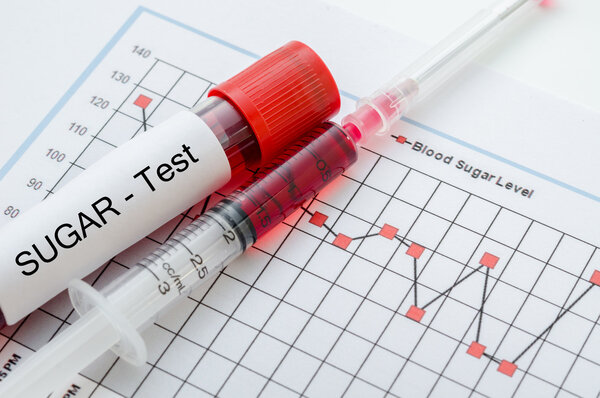Understanding High Blood Sugar and Its Symptoms
High blood sugar, also known as hyperglycemia, is a common condition that affects millions of people worldwide. It occurs when the body doesn’t produce enough insulin or when the insulin produced isn’t effective at regulating blood sugar levels. Insulin is a hormone that helps the body use glucose for energy, and without it functioning properly, blood sugar levels can rise to unhealthy levels.
For many people, high blood sugar is an ongoing concern, especially for those with diabetes. However, even for those without diabetes, understanding high blood sugar and recognizing its symptoms is essential for maintaining good health. In this first part of our article, we will dive deeper into what causes high blood sugar, its symptoms, and whether or not it is possible to reverse this condition.
What Causes High Blood Sugar?
There are various causes of high blood sugar, including poor diet, lack of exercise, stress, and certain medical conditions. Some of the most common causes include:
Poor Diet: Consuming foods high in refined sugars, processed carbs, and unhealthy fats can cause blood sugar levels to spike. Overeating and poor meal timing can also contribute to high blood sugar.
Lack of Physical Activity: Physical activity plays a key role in regulating blood sugar levels. When the body is inactive, it becomes less effective at using insulin, which can lead to higher blood sugar levels.
Stress: When the body is under stress, it releases hormones like cortisol, which can increase blood sugar levels. Chronic stress can therefore have a significant impact on long-term blood sugar control.
Insulin Resistance: This condition occurs when the body’s cells no longer respond to insulin as effectively as they should. Insulin resistance is often a precursor to Type 2 diabetes and is a major cause of high blood sugar levels.
Medications: Certain medications, including steroids and diuretics, can increase blood sugar levels. It’s important for people taking medications that affect blood sugar to monitor their levels closely.
Underlying Health Conditions: Conditions such as obesity, high blood pressure, and cardiovascular disease can increase the risk of developing high blood sugar. In addition, individuals with a family history of diabetes may be more likely to experience elevated blood sugar.
Symptoms of High Blood Sugar
Recognizing the symptoms of high blood sugar is crucial, as it can help individuals take action before the condition worsens. The signs of high blood sugar can vary depending on the severity and duration of the condition. Here are some of the most common symptoms:
Increased Thirst and Frequent Urination: High blood sugar causes the body to lose fluids, leading to dehydration. As a result, individuals with high blood sugar often experience excessive thirst and the need to urinate frequently.
Fatigue: When blood sugar is high, the body’s ability to use glucose for energy is compromised. This can leave individuals feeling constantly tired or sluggish, even after getting enough sleep.
Blurred Vision: Elevated blood sugar can lead to fluid changes in the eye lenses, causing blurry vision. If blood sugar levels are not brought under control, this symptom can become persistent.
Dry Mouth and Skin: High blood sugar levels can cause dehydration, which leads to dry mouth and dry, itchy skin. This is a common sign that the body is struggling to regulate blood sugar.
Headaches: People with high blood sugar may experience frequent headaches. These headaches can be caused by dehydration, fluctuations in blood sugar levels, or other factors related to hyperglycemia.
Unexplained Weight Loss: If blood sugar levels remain high for an extended period, the body may begin to break down muscle and fat for energy. This can lead to unexplained weight loss, even if eating habits remain the same.
Slow-Healing Cuts and Infections: High blood sugar can impair the body’s ability to heal wounds and fight infections. Individuals with high blood sugar may notice that cuts, bruises, or infections take longer to heal than usual.
Can High Blood Sugar Be Reversed?
The possibility of reversing high blood sugar depends on several factors, including the individual’s health condition, the underlying causes of high blood sugar, and how early the condition is detected. For those with Type 2 diabetes or prediabetes, it is possible to manage and even reverse high blood sugar through lifestyle changes and proper medical care.
Lifestyle Changes to Help Reverse High Blood Sugar
Diet: A balanced diet is essential for managing blood sugar levels. People with high blood sugar should focus on eating whole, nutrient-dense foods that are low in refined sugars and processed carbs. Foods that are rich in fiber, such as vegetables, fruits, legumes, and whole grains, can help regulate blood sugar levels. Additionally, eating smaller, more frequent meals throughout the day can help prevent blood sugar spikes.
Exercise: Regular physical activity is one of the most effective ways to improve insulin sensitivity and reduce blood sugar levels. Exercise helps the body use glucose more efficiently and can aid in weight loss, which is beneficial for blood sugar control. Aim for at least 30 minutes of moderate exercise most days of the week.
Stress Management: Managing stress is critical for maintaining healthy blood sugar levels. Chronic stress can lead to elevated blood sugar levels over time. Techniques such as deep breathing, meditation, yoga, and mindfulness can help reduce stress and improve overall well-being.
Medication: In some cases, medication may be necessary to control blood sugar levels. For individuals with Type 2 diabetes, oral medications or insulin injections may be prescribed. It’s important to work closely with a healthcare provider to determine the best course of treatment.
Weight Management: Achieving and maintaining a healthy weight is key to managing blood sugar levels. Losing excess weight can improve insulin sensitivity and lower the risk of developing Type 2 diabetes.
By making these changes to your diet, exercise routine, and lifestyle, it is possible to bring blood sugar levels back into a healthy range and even reverse the effects of high blood sugar in some cases. However, early intervention is crucial, and individuals should always consult a healthcare provider before making any significant changes to their routine.
Practical Tips and Strategies to Control Blood Sugar
The Role of Nutrition in Blood Sugar Control
One of the most effective ways to control blood sugar is by focusing on proper nutrition. Diet plays a huge role in managing blood sugar levels, and making informed choices about the foods you eat can have a direct impact on your health. Here are some key dietary tips to help control blood sugar:
Choose Complex Carbohydrates: Unlike refined carbohydrates found in white bread, pastries, and sugary snacks, complex carbohydrates are digested more slowly, leading to a gradual rise in blood sugar. Foods like whole grains, legumes, vegetables, and fruits are excellent sources of complex carbs that provide fiber and essential nutrients without causing dramatic spikes in blood sugar.
Limit Sugar Intake: Foods high in refined sugars, such as sugary beverages, candies, and desserts, can quickly raise blood sugar levels. Opt for natural sweeteners like stevia or monk fruit if you need to satisfy a sweet craving. Cutting back on processed foods and beverages can help you control your blood sugar more effectively.
Incorporate Healthy Fats: Healthy fats, such as those found in avocados, nuts, seeds, and olive oil, can help stabilize blood sugar levels. These fats provide satiety and energy without causing fluctuations in blood sugar.
Increase Fiber Intake: Fiber slows the absorption of sugar into the bloodstream, helping to prevent rapid spikes in blood sugar. Foods like beans, lentils, oats, and vegetables are rich in fiber and can help keep blood sugar levels stable.
Eat Protein-Rich Foods: Protein helps regulate blood sugar by slowing the absorption of carbohydrates. Including lean protein sources like chicken, fish, tofu, and eggs in your meals can help stabilize blood sugar levels and keep you feeling full longer.
How to Use Exercise to Your Advantage
Regular physical activity is one of the most powerful tools in managing blood sugar levels. Exercise helps the body use glucose more efficiently, improving insulin sensitivity and reducing the risk of high blood sugar. Here’s how exercise can help control blood sugar:
Improved Insulin Sensitivity: Physical activity helps the body become more sensitive to insulin, meaning your body can better use glucose for energy, which leads to lower blood sugar levels.
Weight Loss: Exercise plays a crucial role in weight management, and losing excess weight can have a direct impact on lowering blood sugar levels. Even a modest weight loss can improve insulin sensitivity and reduce the risk of developing Type 2 diabetes.
Increased Muscle Mass: Building muscle through strength training exercises helps the body use glucose more effectively. Muscle tissue is more metabolically active than fat tissue, which means it helps burn glucose for energy.
Stress Relief: Physical activity also helps reduce stress, which can contribute to high blood sugar. Exercise releases endorphins, the body’s natural “feel-good” hormones, which can help manage stress levels and improve overall well-being.
Aim for a combination of aerobic exercises (such as walking, jogging, or cycling) and strength training exercises (like weightlifting or resistance bands) for the most effective blood sugar management.
In the next part, we will continue exploring how making small adjustments in lifestyle, diet, and exercise can have a major impact on controlling and reversing high blood sugar levels.



